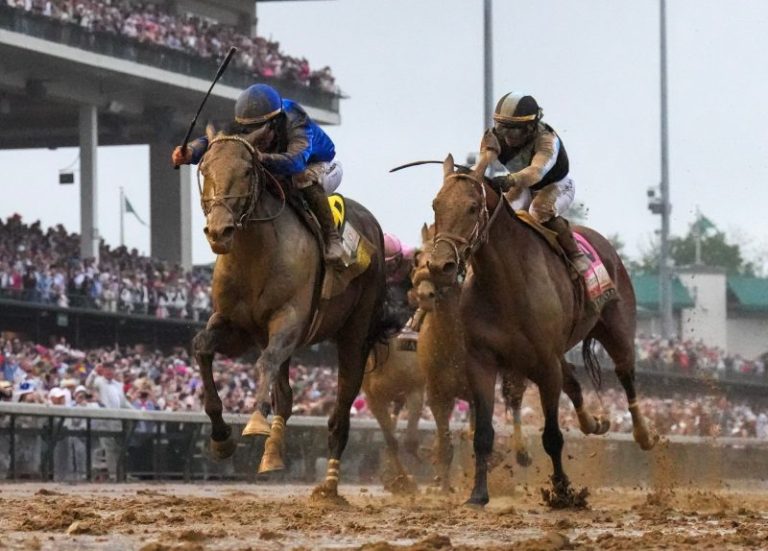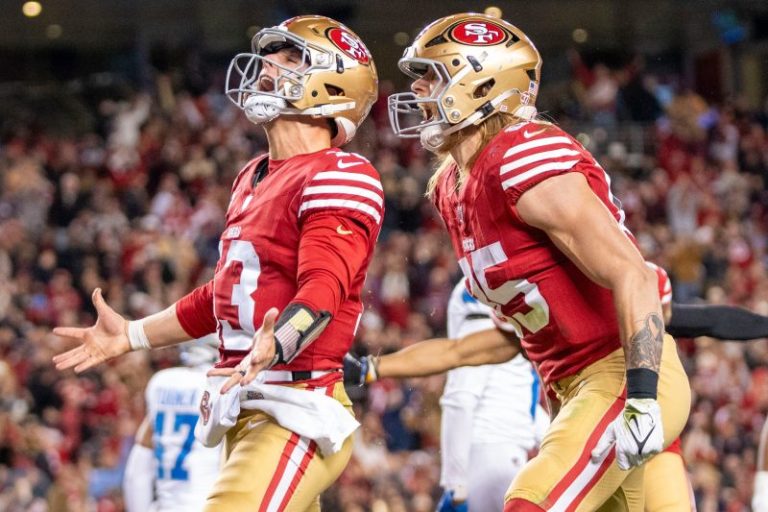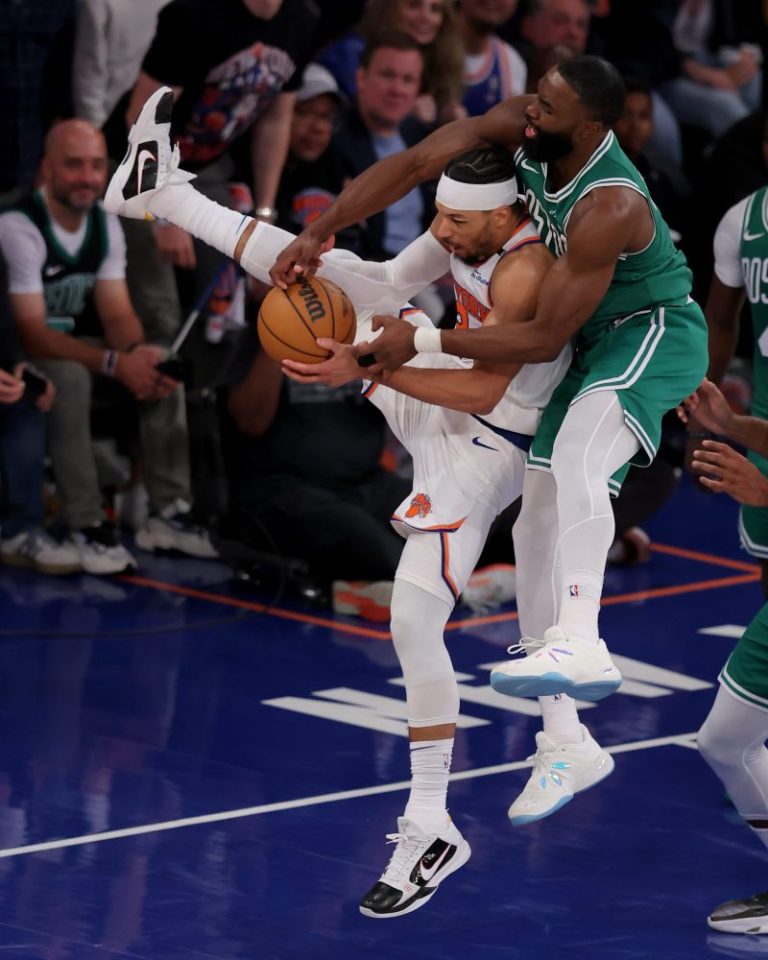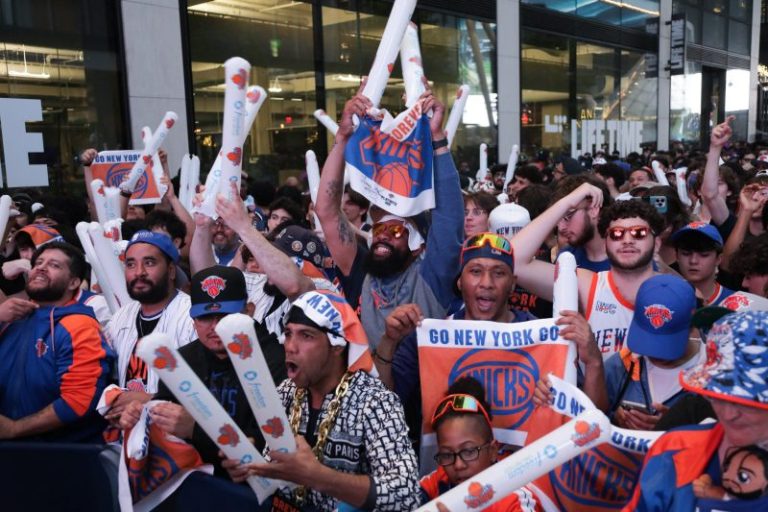Junior Alvarado, the jockey who rode Sovereignty to victory in the Kentucky Derby on May 3, has sparked controversy after race stewards said he used his riding crop in excess of the allowable limit of six strikes during the race.
Alvarado faces a $62,000 fine and two-day suspension for allegedly striking Sovereignty eight times, in violation of the so-called ‘crop rule.’ It has been violated more than 2,500 times in less than three years, according to the Horseracing Integrity and Safety Authority (HISA), which regulates Thoroughbred racing in the United States.
The crop rule took effect when HISA’s Racetrack Safety Program began in July 2022.
“I am surprised to see that high of a number (of violations),’’ said Ramon Dominguez, a retired jockey and 2016 inductee to the National Museum of Racing and Hall of Fame. “At the same time, (jockeys) are adapting or changing. Most jocks certainly want to conform and follow these rules.’’
In a sport reeling from declining public interest and concerns over animal welfare, along comes another potentially divisive issue. But industry leaders such as Lisa Lazarus, CEO of HISA, told USA TODAY Sports it’s an opportunity to educate the public, even with Sovereignty’s team skipping the Preakness Stakes and pointing toward the Belmont Stakes on June 7.
Lazarus said 90% of the crop-rule violations have resulted from jockeys striking their horse seven times, one over the limit.
“I’m not minimizing the importance, but it’s essentially a jockey like miscounting, just losing track,’’ Lazarus told USA TODAY Sports. “They still broke a rule. We still enforce it, but we do look at the one-over quite differently than we do more-than-one over (the limit).”
Why are crops allowed in horse racing?
Not everyone believes the crop is necessary.
Sweden and Denmark essentially restrict its use for anything but safety reasons, and Norway generally does the same.
In 2021, the New Jersey Racing Commission (NJRC) imposed a rule allowing the crop only for safety reasons such as steering a horse to avoid interference with another horse or to avoid an accident. But starting in July 2022, New Jersey and all other states began operating under the rules and regulations of HISA, which allows for the use of crops.
“A riding crop is a tool,’’ said jockey Mike Smith, who won the Triple Crown in 2018 on Justify. “It’s not to hurt (the horse). It’s just to get their attention.
“I mean, they’re 1,200 pounds of muscle, man. And sometimes they’ll just pull back against you. Show them the riding crop or tap them with it, even behind by their back end. And it’s not out of pain, it just kind of scares them, gets their attention.’’
Terry Meyocks, president and CEO of the Jockeys Guild, said he thinks using a crop for safety and to encourage the horse are intertwined.
‘When you’re going through a hole at the top of the stretch, you want to use the crop to get through that hole so no horse or rider gets injured,” Meyocks told USA TODAY Sports.
But Jerry Bailey, a Hall of Fame jockey who won the Kentucky Derby twice, said he doesn’t believe the crop is used for safety. ‘I never have,” Bailey told USA TODAY Sports. ‘The reins are the best thing to use for safety by far.”
On the crop being used for safety and encouragement, Bailey added, ‘This is the mantra that the jockeys took collectively when this (numerical limits on strikes) was first implemented several years ago. And of course I’ve been retired for 20 years now, but I had the sentiment then, and I have it now, that the reins are the best devices that a rider has to keep a horse straight and to maintain a safe trip.”
How a crop is used during a race is also enforced. HISA’s Racetrack Safety Program Rulebook provides specifics, such as:
‘A rider shall not raise the crop with the Jockey’s wrist above the Jockey’s helmet when using the crop or use the crop on any part of the horse’s body other than the shoulders or hindquarters. Also, a rider may use the crop only on the hindquarters or the shoulders to activate and focus the horse and a jockey must allow at least two strides for the horse to respond before using the crop again.’
What did Junior Alvarado say?
Alvarado, 38, did not respond to USA TODAY Sports’ messages left with his wife and agent but did speak out on a podcast hosted by C.L. Brown, a columnist for the Louisville Courier Journal.
Alvarado said he was not thinking about how many times he was hitting Sovereignty during the race. He also said he “forgot it was a rule.’
‘I was seeing my dream coming true right in front of me,” he added. ‘The whip rule was the last thing I had on my mind.”
Alvarado’s agent has indicated the jockey will appeal the disciplinary action.
‘I would like to just get it over with and put it behind me; I don’t want to carry this one extra day, but at the same time, I don’t want to give up that easily like they were right,” Alvarado told the Daily Racing Form last weekend.
“I would like to move forward and fix something. As everybody can see, it’s unfair the penalties we’re facing. Maybe (by appealing) we can get something good out of this.”
He also told the Daily Racing Form, “I didn’t abuse the horse. Nobody can tell me, even if they can prove that I hit the horse two extra times, it was in an abusing way – it’s just ridiculous. The punishment doesn’t fit the crime, and I don’t think there was any crime.”
Marc Guilfoil, director of stewarding for HISA, is adamant that Alvarado did not abuse Sovereignty with the whip.
“There wasn’t a blemish on the horse,’’ Guilfoil said. “Junior Alvarado is an excellent rider and a good person. But he broke a rule and so we are enforcing the consequences for that rule.’’
Do crops hurt the horses?
Rick Arthur, former equine medical director for California, addressed the issue of whether crops hurt horses in 2019, while he was speaking at the 53rd International Conference of Horseracing Authorities in Paris.
“There are those who argue that whipping doesn’t hurt … but that’s nonsense and we all know that,’’ Arthur said at the time. “Whips are noxious stimuli. They hurt. That’s why they’re used. Run faster or I’ll hit you again. More importantly, for a sport that relies on public support, whipping simply looks abusive.’’
This week, Arthur told USA TODAY Sports that based on systematic post-race inspections that began about 15 years ago in California, there has been an 80% drop in visible welts and cuts inflicted from crops, and advances in crop technology then dropped those injuries to ‘virtually nil.”
Despite the progress in crop technology, Arthur said he thinks crops should be used only for safety reasons.
Lazarus and others in the industry hail the new crop as a game-changer.
“The materials that we now use on crops are incredibly light,’’ she said. “They’re almost like Styrofoam. They’re very unlikely to hurt a horse.’’
All crop models are tested by Susan Stover, a professor emeritus of surgical and radiological sciences at the University of California at Davis School of Veterinary Medicine. Among other things, Stover said, she looks at the crop’s stiffness “to make sure that it’s not too rigid (and) … has a greater chance of injuring the horse.’’
Eight crop models have been approved for use by HISA, according to Ann McGovern, HISA’s director of racetrack safety. In a statement provided to USA TODAY Sports, McGovern said before HISA enforcement began, “some regional bootleggers made crops because some riders preferred thicker handles, longer shafts and harsher materials.’’
Dominguez, the retired jockey, manufactures the 360 Gentle Touch (360 GT) Riding Crop approved by HISA. He said the crops used in the U.S. began to evolve in 2007.
“The difference is night and day between 2007 and today,’’ he said.
Crop controversy creates a gap
Between the first quarter of 2023 and the first quarter of this year, crop violations have decreased by 6%, according to HISA.
That may call into question whether the disciplinary action is serving as an effective deterrent. But the $62,000 fine levied against Alvarado has triggered outrage from the Jockeys Guild, which represents Thoroughbred and quarter horse jockeys.
“This is absurd,’’ the Jockeys Guild’s Meyocks posted on his X account May 9.
Lazarus said, “There’s definitely been a meaningful gap between the public’s reaction and those who’ve been in racing a long time. … The public’s reaction was very positive in that they saw HISA was serious. We enforce our rules whether it’s a Wednesday at Parx (Casino and Racing) in Pennsylvania or at the highest level of horse racing that we have.”
HISA rules called for Alvarado to be fined 10 percent of the jockey’s portion of his winnings from the purse – $31,000 of his $310,000. Because Alvarado had another crop-rule violation within 180 days of the Kentucky Derby, the fine was doubled.
It could have been worse for Alvarado, who won the Kentucky Derby for the first time. If he’d struck the horse two more times, Sovereignty would have been disqualified from the race, based on HISA’s rules.
Alvarado is scheduled to serve his two-day suspension May 29-30. He must appeal by the end of Monday, 10 days after the stewards met with Alvarado and issued the order of his violation.
Alvarado, who ranks sixth among leading riders based on purse money won, has nine crop-rule violations, according to HISA’s website. No other rider in the top 10 has more than five violations, according to HISA’s website.
But Tyler Gaffalione, who ranks 16th, has 19 violations and Francisco Arrieta, who ranks 14th, has 20 violations. Slightly more than 3.4% of riders have 10 or more violations of the crop rule, according to HISA’s website.
Seven of Alvarado’s violations were for seven strikes, one over the limit, and the eighth violation was for exceeding the limit by one to three strikes, according to records on HISA’s website.
When crop changes began
In 2007, jockeys in Britain were required to use newly developed padded whips. Those whips made their way to U.S. tracks and changes began. That included a push to call a whip a crop, according to Meyocks, who recalled a Jockey Club safety meeting he attended with Hall of Fame jockey Chris McCarron.
“Chris basically said we got to change the terminology, and we were talking about perception,’’ Meyocks said. “And I’ve been saying this for years, it’s not OK to spank kids anymore or whip kids anymore. Why is it OK to use the terminology of whipping on horses with horses? We changed it to riding crop.’’
When talking about limits on crop strikes, Guilfoil cited Victor Espinoza’s victorious ride on American Pharaoh at the 2015 Kentucky Derby.
“I was working for the Kentucky Horse Racing Commission when American Pharaoh came down the stretch and got hit 28 to 32 times depending on how you count,’’ Guilfiol told USA TODAY Sports. “I remember I called the test barn and I said, ‘Go over that horse with a fine-tooth comb and make sure there’s not a blemish on that horse.’ … So we know, I know, that the horse wasn’t abused.
“But somebody out there with their family and they see a horse getting hit 32 times coming down the stretch. I tell people all the time, if you did that to a dog, you’d be in jail.’
‘A matter of opinion’
Bailey, who won the Eclipse Award for Outstanding Rider seven times, said Alvarado had a ‘great” ride at the Kentucky Derby and did a good job staying out of trouble. Bailey also said he saw this issue coming with the limit of six strikes.
‘I’m fully aware of the anti-whip sentiment from groups around the country, specifically PETA,” Bailey said. ‘I’m fully aware of let’s protect our horses. I feel the same way. But I’ve said this from the beginning: It is really, really difficult, if not impossible, to keep count of how many times you use the riding crop in any race, much less a race like the Kentucky Derby. It’s just really hard.”
But he also said he supports the rule limiting strikes.
‘I truly understand the reason behind it, and I think our sport has become better with HISA,” Bailey said.
Someone else who still supports the rule: Bill Mott, who trains Sovereignty. He said he watched the replay of the race dozens of times and saw Alvarado strike the horse only six times, not the eight the stewards said they saw.
‘I think it comes down to sort of really it’s a matter of opinion,” Mott said. ‘I thought it was a picture-perfect ride, of course.”
151st Kentucky Derby page print
This post appeared first on USA TODAY










